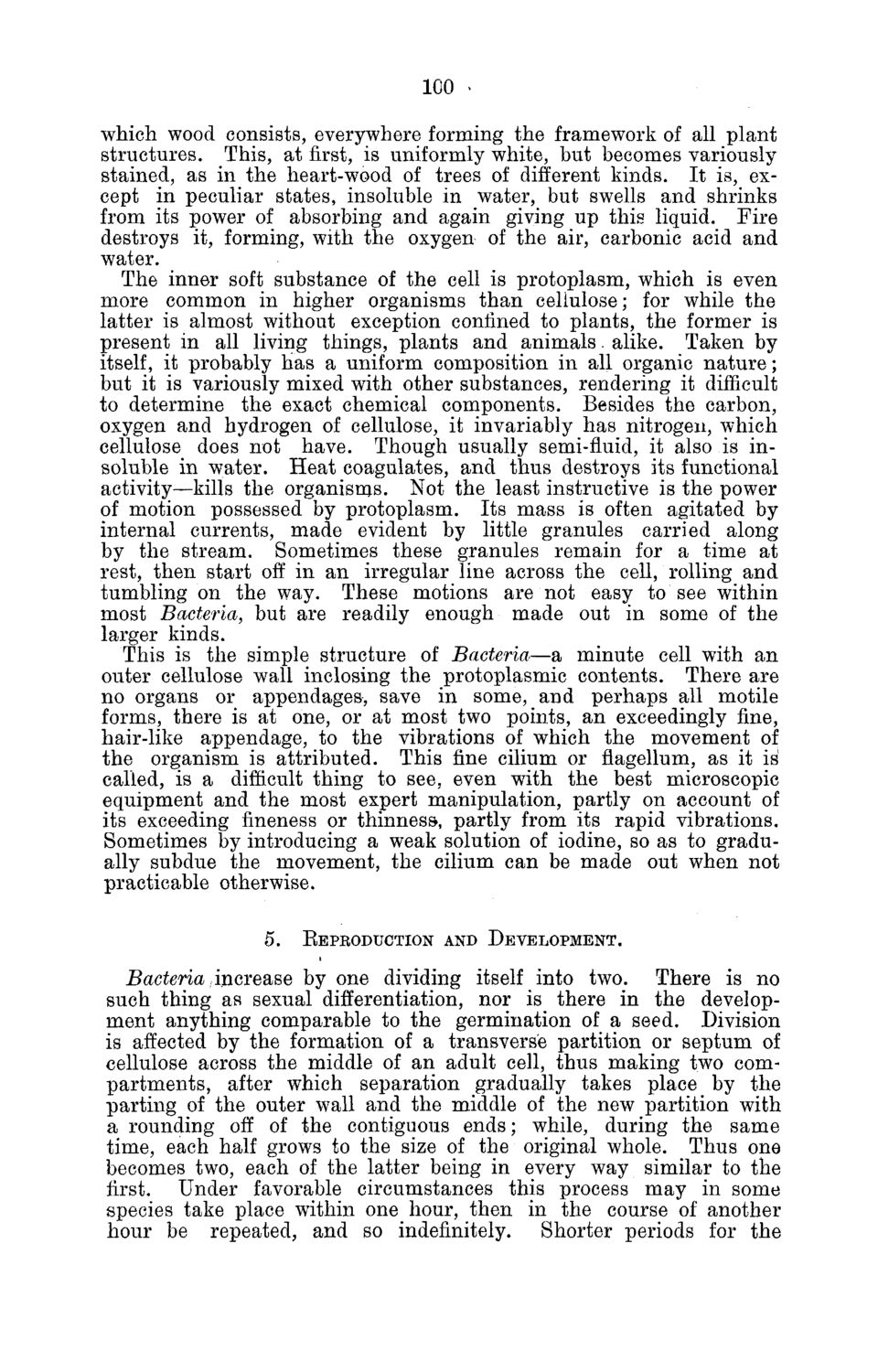| |
| |
Caption: Board of Trustees Minutes - 1882
This is a reduced-resolution page image for fast online browsing.

EXTRACTED TEXT FROM PAGE:
ICO . which wood consists, everywhere forming the framework of all plant structures. This, at first, is uniformly white, but becomes variously stained, as in the heart-wood of trees of different kinds. It is, except in peculiar states, insoluble in water, but swells and shrinks from its power of absorbing and again giving up this liquid. Fire destroys it, forming, with the oxygen of the air, carbonic acid and water. The inner soft substance of the cell is protoplasm, which is even more common in higher organisms than cellulose; for while the latter is almost without exception confined to plants, the former is present in all living things, plants and animals. alike. Taken by itself, it probably has a uniform composition in all organic nature; but it is variously mixed with other substances, rendering it difficult to determine the exact chemical components. Besides the carbon, oxygen and hydrogen of cellulose, it invariably has nitrogen, which cellulose does not have. Though usually semi-fluid, it also is insoluble in water. Heat coagulates, and thus destroys its functional activity—kills the organisms. Not the least instructive is the power of motion possessed by protoplasm. Its mass is often agitated by internal currents, made evident by little granules carried along by the stream. Sometimes these granules remain for a time at rest, then start off in an irregular line across the cell, rolling and tumbling on the way. These motions are not easy to see within most Bacteria, but are readily enough made out in some of the larger kinds. This is the simple structure of Bacteria—a minute cell with an outer cellulose wall inclosing the protoplasmic contents. There are no organs or appendages, save in some, and perhaps all motile forms, there is at one, or at most two points, an exceedingly fine, hair-like appendage, to the vibrations of which the movement of the organism is attributed. This fine cilium or flagellum, as it is called, is a difficult thing to see, even with the best microscopic equipment and the most expert manipulation, partly on account of its exceeding fineness or thinness, partly from its rapid vibrations. Sometimes by introducing a weak solution of iodine, so as to gradually subdue the movement, the cilium can be made out when not practicable otherwise. 5. EEPRODUCTION AND DEVELOPMENT. Bacteria increase by one dividing itself into two. There is no such thing as sexual differentiation, nor is there in the development anything comparable to the germination of a seed. Division is affected by the formation of a transverse partition or septum of cellulose across the middle of an adult cell, thus making two compartments, after which separation gradually takes place by the parting of the outer wall and the middle of the new partition with a rounding off of the contiguous ends; while, during the same time, each half grows to the size of the original whole. Thus one becomes two, each of the latter being in every way similar to the first. Under favorable circumstances this process may in some species take place within one hour, then in the course of another hour be repeated, and so indefinitely. Shorter periods for the
| |